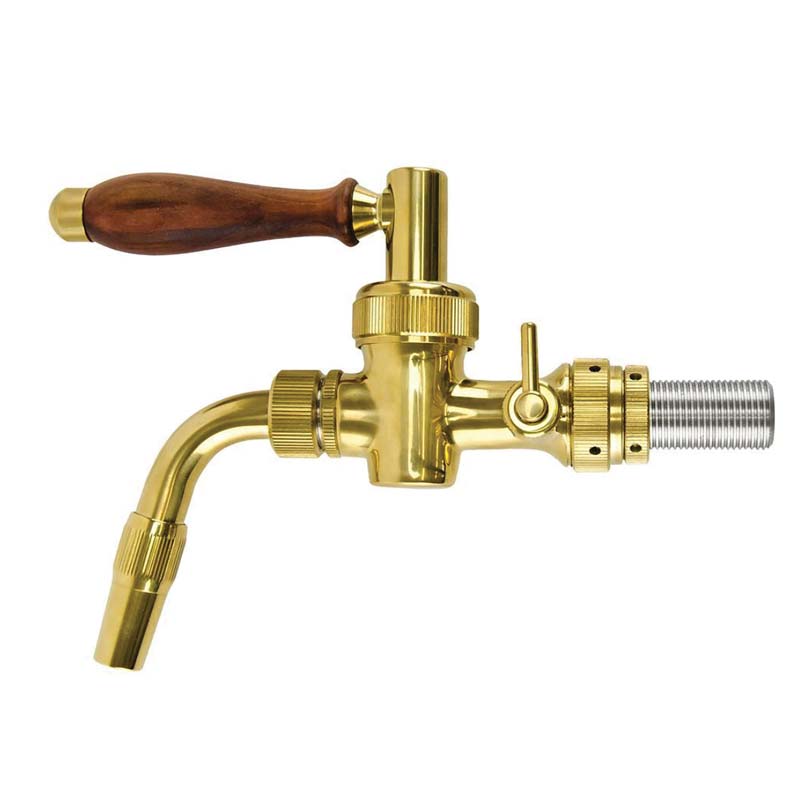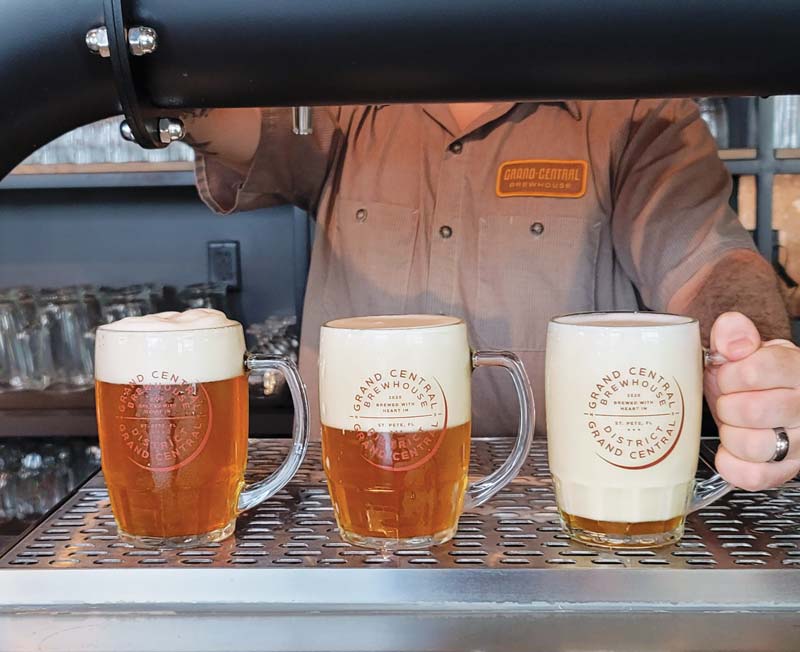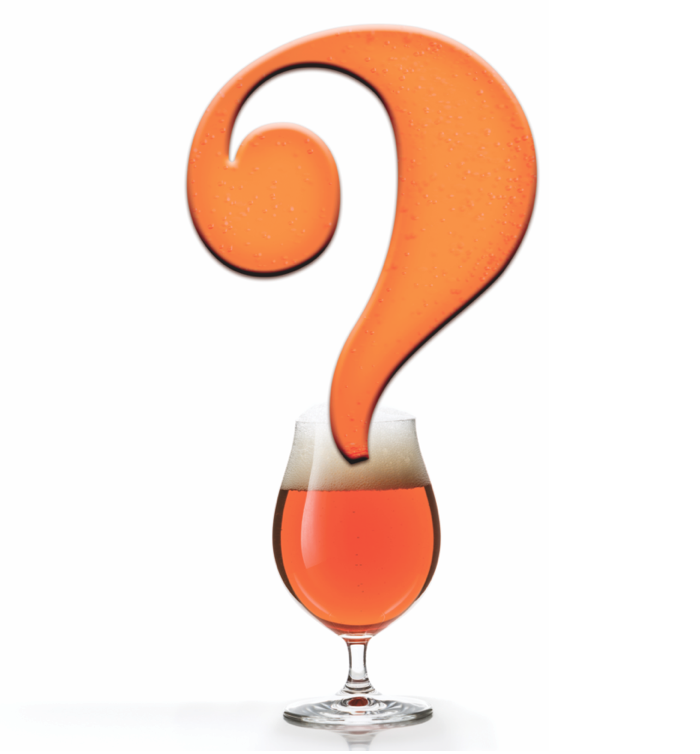The Dynamics of Lukr Faucets
Q: I recently bought a Lukr faucet for my kegerator and it works well, but I want to optimize my installation. There isn’t much information on the web. I want to know the best carbonation level for my beer, the type of pours possible, and how to achieve these without excessive foam.
— Michael Bilodeau • Saguenay, Quebec
A: Lukr beer faucets, often referred to as “Lukrs,” have been popping up all over North America in recent years due to the rising popularity of traditional Pilsners and other lagers by beer-loving brewers. As a traditionalist, this is a welcome trend and refreshing juxtaposition to slushy beers dispensed from frozen drink machines. Lukrs are a type of plug valve used to start and stop beer flow from a pressurized keg or an atmospherically dispensed cask. This is the same type of equipment that was traditionally used to tap a barrel before pouring. Many beer lovers know that the Mayor of Munich kicks off Oktoberfest each year by ceremoniously tapping a keg barrel of fest beer with an old-style tap and a wooden mallet.
Lukr faucets are made in the Czech Republic and are pretty much “the” beer faucet seen around the best Pilsner bars in the Czech Republic. Most are used to dispense beer from pressurized large serving tanks (500–1,500 liter stainless tanks, housing a polymeric bladder that is squeezed with gas pressure), conventional kegs, and, less frequently, from pitch-lined wooden barrels. When used to pour beer from bladder tanks or kegs, the system must be properly balanced by the draft line like any other beer faucets. And when used to pour beer from a barrel, the pressure in the barrel is usually relieved by driving a spile into the barrel as a vent; in these installations the only pressure at the tap comes from the hydrostatic head of the beer (gravity).

The design of Lukr-style faucets is distinctive and allows for some unique pouring styles. Photo courtesy of Lukr CZ
Unlike most faucets, Lukrs are equipped with a mesh screen and a beer nozzle at the business end of the faucet. The mesh screen helps to make a creamy foam when the valve is partially opened and the nozzle directs the stream of beer and liberated carbon dioxide into the glass. Some users remove the mesh screen to make the Lukr faucet more like a conventional faucet. As a foam lover, removing the screen makes no sense to me because it serves a specific function when
pouring beer.
Let’s pause here and address your question about carbonation level. Any beer that can be poured from a standard beer faucet can be dispensed through a Lukr. The key to dispensing draft beer from any faucet is line balance. Many years ago, I worked on a project for a large sparkling wine producer who wanted to explore serving their products on tap for the turn-of-the-century millennium celebrations. Although this company did not end up building special draft systems for sparkling wine, as was the initial plan, I was able to serve sparkling wine from a beer tap with comparable appearance and sparkling sensation to sparkling wine poured from the bottle. I used an old-style Guinness faucet with a flow control knob (not actually used for flow control but that’s a different topic) and the trick was an extremely long choker. Not rocket science, but pretty darn cool! When pouring your beer through a Lukr faucet, the best dispense pressure is the pressure that goes along with your beer. No real restrictions on your beer’s carbonation level.
I stated earlier that Lukrs are plug valves. A plug valve consists of a straight-bored plug that rotates through the valve body. When the hole in the plug is oriented 90˚ to the direction of flow, there is no flow. When the faucet is opened by turning the handle a quarter turn or 90˚, the plug rotates and opens over a variable range.
Although plug valves are often used as simple on/off valves, they are also good control valves because flow rate through these valves is roughly linear with the valve’s position. An interesting thing about control valves, including plugs, is that they cause liquid turbulence when the valve is not 100% open. And it’s the liquid turbulence and associated pressure drop across the valve when partially opened that helps create foam when beer flows through a Lukr. If Lukr faucets have a superpower, it’s this sometimes-present turbulence and the ease of adjusting and maintaining the position of the valve plug when pouring.
This brings me to another pause; pour types. Lukrs can be used like other faucets to quickly pour a beer. A healthy shot of foam into your glass followed by a “clean” pour, achieved by completely opening the tap and pouring down the side of a glass and under the foam, results in the classic hladinka pour with a beautiful, creamy, collar of foam sitting atop of a full pour of beer. For ordinary beer enjoyment, this is my preferred pour.
The Czechs also have an “ordinary” pour named the čochtan, described on beer sites as a neat or British pour, which was surely created for tourists suspicious of beer foam since in their experience the foam is only a thin layer that sits atop the beer. In my humble opinion, as a lover of great beer and speaker of the beer truth, this style of pouring appeals to penny-pinchers more than it does to palate-smackers. My advice . . . nothing to see here!
Moving onto to a foamier pour, beer containing about 2⁄3 foam and about 1⁄3 beer is called a šnyt or a schnitt in German. The story about this pour is that is often the last beer of the night and is sold at a discounted price because the šnyt pour does not contain nearly as much beer as a regular pour. To pour this using a Lukr faucet, tilt your glass 45˚, open the tap halfway until your glass is about 2⁄3 full of foam, and then fully open the tap and pour under the foam. The šnyt pour knocks carbon dioxide from the beer, creates lots of creaminess to chew on, and minimizes the bloating a beer drinker may get from drinking fully carbonated beer. Depending on the circumstances and the steadiness of the consumer when ordering, beertenders may elect to partially fill a glass, but the ratio of foam-to-beer remains the same. If you order a šnyt and only receive a small pour, it’s because the beertenders gives a schnitt about you!
Finally, there is the legendary mlíko pour. Mlíkos are creamy on the palate from start to finish, look like milk because so little liquid beer drains from the luscious foam, and are often quickly consumed after a meal like a big shot. Who needs milkshake beers dosed up with lactose and vanilla when the mlíko pour is just a crack of the faucet away!

From left to right you will find some real-world representatives of the classic hladinka style of pour followed by the šnyt and finally the mlíko. Photo courtesy of Grand Central Brewhouse
There are a few details to mention about Lukr taps and how they are used. For starters, standard practice is to submerge the beer nozzle under the foam when pouring. You asked about how to minimize foam and this is how it’s done. Pouring beer into foam leads to more foam because bubbles are nucleation sites for more bubbles. Pouring under the foam allows better control of the ratio of beer-to-foam in the glass and minimizes waste.
Glass selection is also a major part of this control and is one reason why 0.5-liter mugs are the glass of choice when pouring beer from a Lukr. Dipping a beer faucet into a glass while pouring is a total faux pas in many countries because of concerns about cross-contamination, but this technique serves a very practical role. This means that using clean glasses for each pour is mandatory to prevent contaminating the beer faucet from unwashed glassware. If you want to host a party and serve your beer from a Lukr, you need to be prepared to wash glasses and manage the cleanliness of the faucet. Yet another reason beer lovers are adamant about clean glassware.
One last technical detail to cover is the purpose of the tap screen. Although everything I have read about Lukrs state as fact that the screen aerates beer, I disagree. The design of the Lukr faucet does not pull air into the beer stream and the term “aerate” is a misuse of the term. The tap screen does serve an important foaming role when the faucet is partially opened, but it’s not to pull air into the beer; Pilsner beer has plenty of carbon dioxide to provide all the gas needed for beautiful foam.
Lukr does sell a stout “aeration plate” (another misuse of this term) and a “stout nozzle” insert, actually a restrictor plate and a flow straightener in the parlance of Guinness, for their faucets so that nitro beers can be served by simply swapping out the tap screen and inserti



